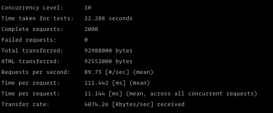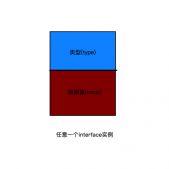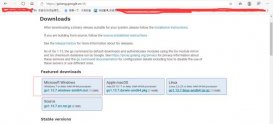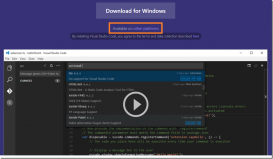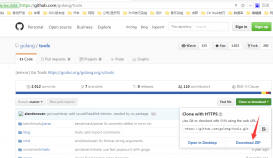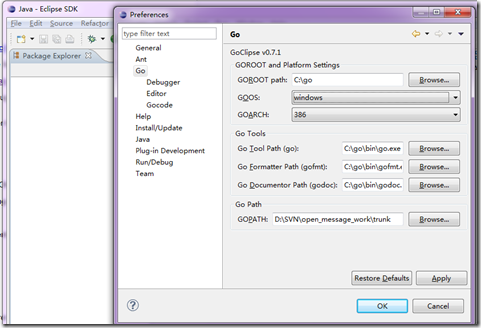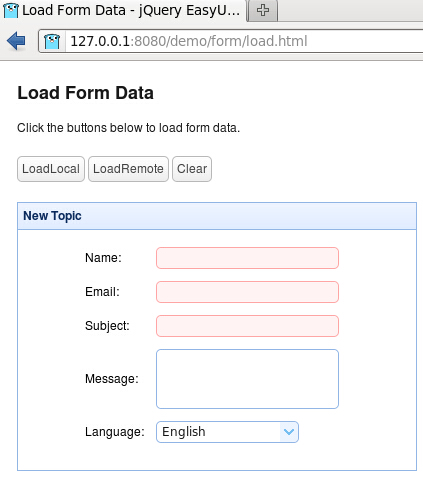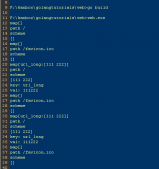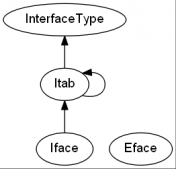同事用php写了一个接口,要上传文件,让我做下测试,直接用curl命令调用成功,然后想用golang写个示例,
源码如下:
|
1
2
3
4
5
6
7
8
9
10
11
12
13
14
15
16
17
18
19
20
21
22
23
24
25
26
27
28
29
30
31
32
33
34
35
36
37
38
39
|
package main import ( "bytes" "fmt" "io/ioutil" "mime/multipart" "net/http" ) func main() { uri := "http://xxxxxxxxxxxx/api/fileattr" //URL地址 xxxxxxxxxxxx由商务提供 name := "xxxxxxxxxxxx" //用户名 pass := "xxxxxxxxxxxx" //密码 fn := "xxxxxxxxxxxx.txt" //文件路径 //读出文本文件数据 file_data, _ := ioutil.ReadFile(fn) body := new(bytes.Buffer) w := multipart.NewWriter(body) //取出内容类型 content_type := w.FormDataContentType() //将文件数据写入 pa, _ := w.CreateFormFile("file", fn) pa.Write(file_data) //设置用户名密码 w.WriteField("name", name) w.WriteField("pass", pass) w.Close() //开始提交 req, _ := http.NewRequest("POST", uri, body) req.Header.Set("Content-Type", content_type) resp, _ := http.DefaultClient.Do(req) data, _ := ioutil.ReadAll(resp.Body) resp.Body.Close() fmt.Println(resp.StatusCode) fmt.Printf("%s", data) } |
发现总是调用失败,返回文件类型不对,询问后得知,同事做了判断,文件只能为text/plain类型,抓包发现,我提交时的文件类型为:application/octet-stream,仔细查看golang源码:mime/multipart/write.go,CreateFormFile的源码是这样的:
|
1
2
3
4
5
6
7
8
|
func (w *Writer) CreateFormFile(fieldname, filename string) (io.Writer, error) { h := make(textproto.MIMEHeader) h.Set("Content-Disposition", fmt.Sprintf(`form-data; name="%s"; filename="%s"`, escapeQuotes(fieldname), escapeQuotes(filename))) h.Set("Content-Type", "application/octet-stream") return w.CreatePart(h) } |
可以得知Content-Type被固定为了application/octet-stream,知道原因了,问题就好解决了。
第一种方法
就是直接修改CreateFormFile,或者加个CreateFormFile2命令,这种方法将来golang升级后可能会出问题。
第二种方法
可以自己来CreatePart:
|
1
2
3
4
5
|
h := make(textproto.MIMEHeader) h.Set("Content-Disposition", fmt.Sprintf(`form-data; name="%s"; filename="%s"`, escapeQuotes(fieldname), escapeQuotes(filename))) h.Set("Content-Type", "text/plain") |
再用 w.CreatePart(h)得到io.Writer,问题解决!这种方法不侵入golang源代码,最终代码如下:
|
1
2
3
4
5
6
7
8
9
10
11
12
13
14
15
16
17
18
19
20
21
22
23
24
25
26
27
28
29
30
31
32
33
34
35
36
37
38
39
40
41
42
43
44
45
46
47
48
49
|
package main import ( "bytes" "fmt" "io/ioutil" "mime/multipart" "net/http" "net/textproto") func main() { uri := "http://xxxxxxxxxxxx/api/fileattr" //URL地址 xxxxxxxxxxxx由商务提供 name := "xxxxxxxxxx" //用户名 pass := "xxxxxxx" //密码 fn := "x:/xxx/xxx.txt" //文件路径 //读出文本文件数据 file_data, _ := ioutil.ReadFile(fn) body := new(bytes.Buffer) w := multipart.NewWriter(body) //取出内容类型 content_type := w.FormDataContentType() //将文件数据写入 h := make(textproto.MIMEHeader) h.Set("Content-Disposition", fmt.Sprintf(`form-data; name="%s"; filename="%s"`, "file", //参数名为file fn)) h.Set("Content-Type", "text/plain") //设置文件格式 pa, _ := w.CreatePart(h) pa.Write(file_data) //设置用户名密码 w.WriteField("name", name) w.WriteField("pass", pass) w.Close() //开始提交 req, _ := http.NewRequest("POST", uri, body) req.Header.Set("Content-Type", content_type) resp, _ := http.DefaultClient.Do(req) data, _ := ioutil.ReadAll(resp.Body) resp.Body.Close() fmt.Println(resp.StatusCode) fmt.Printf("%s", data)} |
补充:用go来玩最简单的web服务器------顺便说说Content-Type字段
web服务端代码s.go:
|
1
2
3
4
5
6
7
8
9
10
11
12
13
14
15
16
17
18
|
package main import ( "io" "log" "net/http") func handlerHello(w http.ResponseWriter, r *http.Request) { io.WriteString(w, "hello girls")} func main() { http.HandleFunc("/hello", handlerHello) // 注册 err := http.ListenAndServe("localhost:8080", nil) if err != nil { log.Println(err) }} |
go run s.go一下,跑起来, 然后在浏览器执行http://127.0.0.1:8080/hello (或者在命令行用curl发http请求也可以), 浏览器上的结果为:
|
1
|
hello girls |
好简单。可以在客户端或者服务端抓包看下, 很典型的http req和rsp.
我们再来看一个有趣的问题, 修改s.go为:
|
1
2
3
4
5
6
7
8
9
10
11
12
13
14
15
16
17
18
19
20
21
22
23
24
25
26
27
28
29
30
|
package main import ( "io" "log" "net/http") func handlerHello(w http.ResponseWriter, r *http.Request) { str := ` table border="1"> <tr> <td>row 1, cell 1</td> <td>row 1, cell 2</td> </tr> <tr> <td>row 2, cell 1</td> <td>row 2, cell 2</td> </tr> </table> ` io.WriteString(w, str)} func main() { http.HandleFunc("/hello", handlerHello) // 注册 err := http.ListenAndServe("localhost:8080", nil) if err != nil { log.Println(err) }} |
再次重启服务并发请求, 浏览器上显示的内容是:
|
1
2
3
4
5
6
7
8
9
10
|
table border="1"> <tr> <td>row 1, cell 1</td> <td>row 1, cell 2</td> </tr> <tr> <td>row 2, cell 1</td> <td>row 2, cell 2</td> </tr></table> |
抓包看一下, 发现有:Content-Type: text/plain; charset=utf-8
因此, 浏览器需要根据纯文本显示。 注意到, 上述的table左边少了一个"<". 我们加上后,
s.go的代码如下:
|
1
2
3
4
5
6
7
8
9
10
11
12
13
14
15
16
17
18
19
20
21
22
23
24
25
26
27
28
29
30
|
package main import ( "io" "log" "net/http") func handlerHello(w http.ResponseWriter, r *http.Request) { str := ` <table border="1"> <tr> <td>row 1, cell 1</td> <td>row 1, cell 2</td> </tr> <tr> <td>row 2, cell 1</td> <td>row 2, cell 2</td> </tr> </table> ` io.WriteString(w, str)} func main() { http.HandleFunc("/hello", handlerHello) // 注册 err := http.ListenAndServe("localhost:8080", nil) if err != nil { log.Println(err) }} |
再次重启服务,发请求,浏览器端的显示是:
| row 1, cell 1 | row 1, cell 2 |
| row 2, cell 1 | row 2, cell 2 |
抓包看, 有Content-Type: text/html; charset=utf-8
可见, 服务端会判断str的格式,来确定Content-Type的类型, 从而决定了浏览器端的展示方式。服务端的自动判断行为, 有点意思。 在我看来, 这样不太好,应该让程序员来指定Content-Type.
以上为个人经验,希望能给大家一个参考,也希望大家多多支持服务器之家。如有错误或未考虑完全的地方,望不吝赐教。
原文链接:https://blog.csdn.net/jjgtmgx/article/details/90483748



